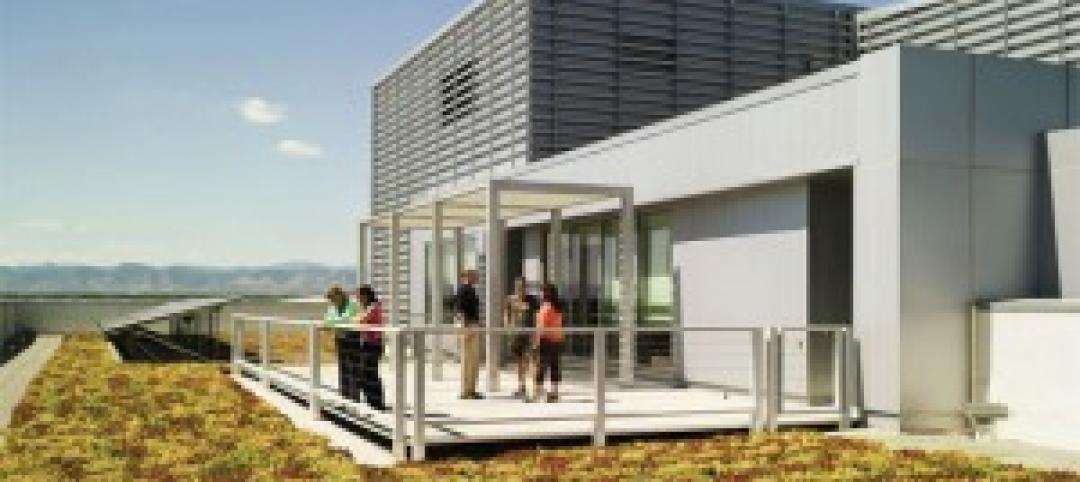The American Institute of Architects (AIA) announced the release of its first-ever white paper on materials transparency and risk, part of an AIA effort to equip the entire profession with consensus-driven guidance on an issue of critical importance to the profession, its suppliers and clients.
“Whether in politics or in building design, transparency is an increasingly necessary element of modern life,” said AIA CEO Robert Ivy, FAIA. “And when it comes to materials - the very substances of our built environment - it's more important than ever for architects to be able to communicate openly about what they contain.”
The white paper is the product of more than a year of effort by the AIA's Materials Knowledge Working Group (MKWG), pursuant to a position statement approved by the AIA Board of Directors in December 2014. In that statement, the AIA recognized that “building materials impact the environment and human health before, during and after their use,” and it encouraged architects “to promote transparency in materials’ contents and in their environmental and human health impacts.”
“Materials transparency & risk for architects: An introduction to advancing professional ethics while managing professional liability risks,” was created by materials specialists but is aimed at all architects. It provides a backdrop on the necessity for materials transparency and the steps architects should be taking to ensure change, promote openness, and increase collaboration between themselves, their suppliers and their clients.
As an introduction to the white paper, the MKWG compiled five guideposts about which every architect should be aware when it comes to materials transparency. They provide first steps to a deeper understanding of what goes into a building and how it impacts its inhabitants:
- Information is key. Everyone involved in a building project—from initial design to occupancy—should have access to information on the potential health and environmental impacts relating to materials products.
- Materials transparency presents opportunities for architects. These opportunities include competitive advantage, thought leadership, design innovation, and environmental and human health leadership.
- New practices and procedures inherently present potential risks. There is always some risk in advocating for materials transparency and sharing composition information with our clients. This white paper explores those risks in detail.
- Manage potential risks with increased transparency. Although the risks associated with materials transparency are new, architects are familiar with risk management. This white paper offers several strategies for effectively evaluating and mitigating risk.
- The AIA has tools and resources to help architects navigate materials transparency risks and opportunities. Along with this white paper and existing online resources, the AIA will soon publish new model contract language to specifically address materials transparency issues. In addition, the MKWG, made up of expert members, practitioners and partner organizations, is continually developing education and practice tools to help architects optimize their approach to materials transparency.
The AIA has published guidance on how to address materials transparency issues in its contract document B503-2007 Guide for Amendments to AIA Owner-Architect Agreements.
Related Stories
| Nov 22, 2011
Report finds that L.A. lags on solar energy, offers policy solutions
Despite robust training programs, L.A. lacks solar jobs; lost opportunity for workers in high-need communities.
| Nov 22, 2011
New Green Matters Conference examines emerging issues in concrete and sustainability
High-interest topics will be covered in technical seminars, including infrared reflective coatings for heat island mitigation, innovative uses of concrete to provide cooling and stormwater management, environmental benefits of polished concrete, and advancements in functional resilience of architectural concrete.
| Nov 18, 2011
Centre for Interactive Research on Sustainability opens
Designed to exceed LEED Platinum, the Centre for Interactive Research on Sustainability (CIRS) is one of the most innovative and high performance buildings in North America today, demonstrating leading-edge green building design products, technologies, and systems.
| Nov 16, 2011
CRSI recommends return to inch-pound markings
The intention of this resolution is for all new rollings of reinforcing steel products to be marked with inch-pound bar markings no later than January 1st, 2014.
| Nov 9, 2011
American Standard Brands joins the Hospitality Sustainable Purchasing Consortium
American Standard will collaborate with other organizations to build an industry-wide sustainability performance index.
| Nov 8, 2011
WEB EXCLUSIVE: Moisture-related failures in agglomerated floor tiles
Agglomerated tiles offer an appealing appearance similar to natural stone at a lower cost. To achieve successful installations, manufacturers should provide design data for moisture-related dimensional changes, specifiers should require in-situ moisture testing similar to those used for other flooring materials, and the industry should develop standards for fabrication and installation of agglomerated tiles.
| Nov 3, 2011
GREC Architects announces opening of the Westin Abu Dhabi Golf Resort and Spa
The hotel was designed by GREC and an international team of consultants to enhance the offerings of the Abu Dhabi Golf Club without imposing upon the dramatic landscapes of the elite golf course.
| Nov 1, 2011
Holcim awards winners for North America announced
A socio-architectural project to create regional food-gathering nodes and a logistics network in Canada's high arctic territory won the top prize for North America of $100,000.
| Oct 25, 2011
Universal teams up with Earthbound Corp. to provide streamlined commercial framing solutions
The primary market for the Intact Structural Frame is light commercial buildings that are typically designed with concrete masonry walls, steel joists and steel decks.
| Oct 25, 2011
Commitment to green building practices pays off
The study, conducted by the Pacific Northwest National Laboratory, built on a good indication of the potential for increased productivity and performance pilot research completed two years ago, with similarly impressive results.

















